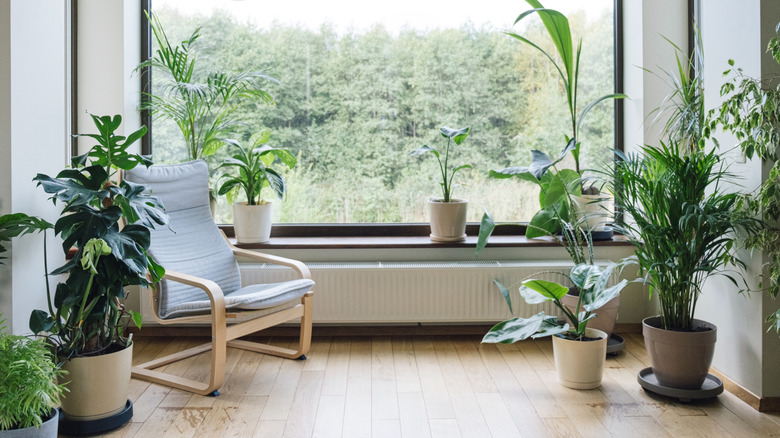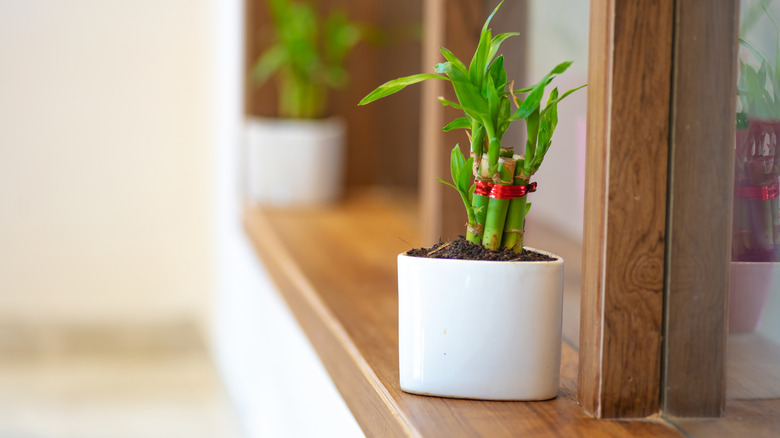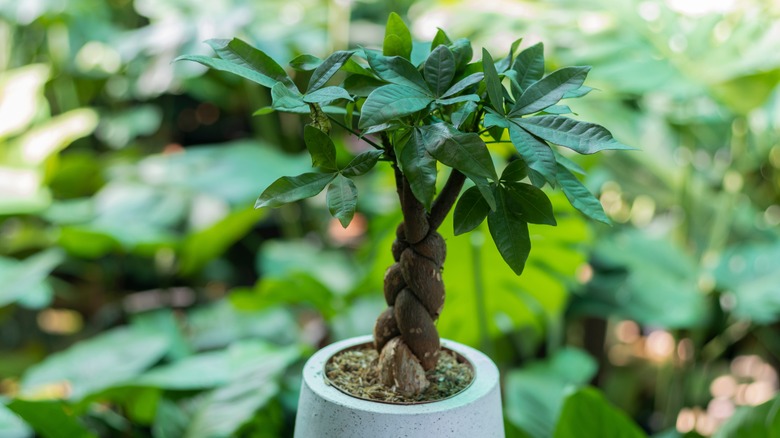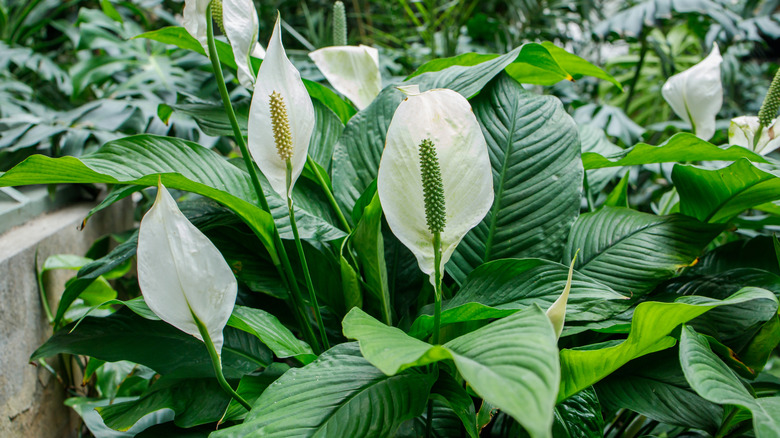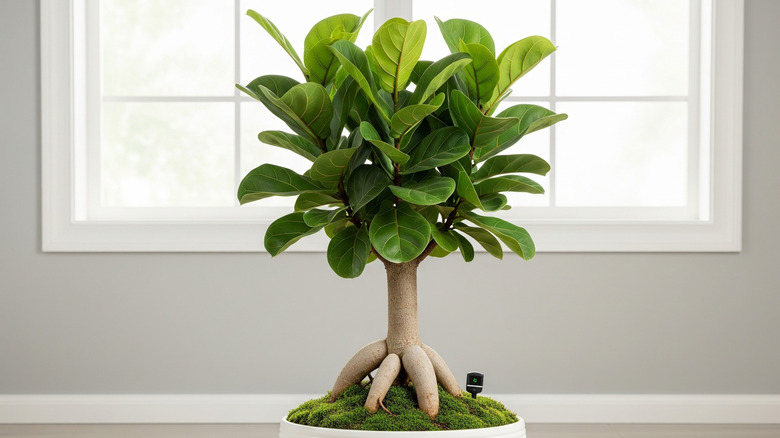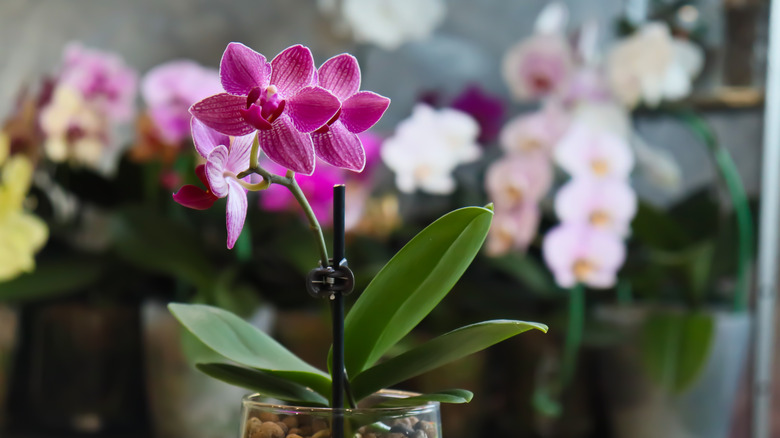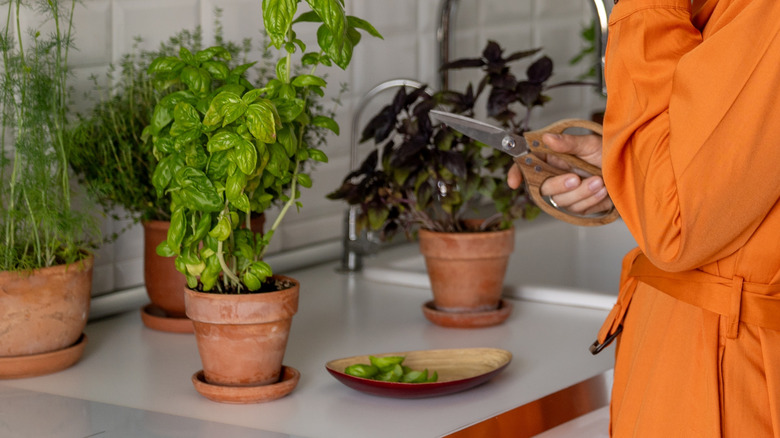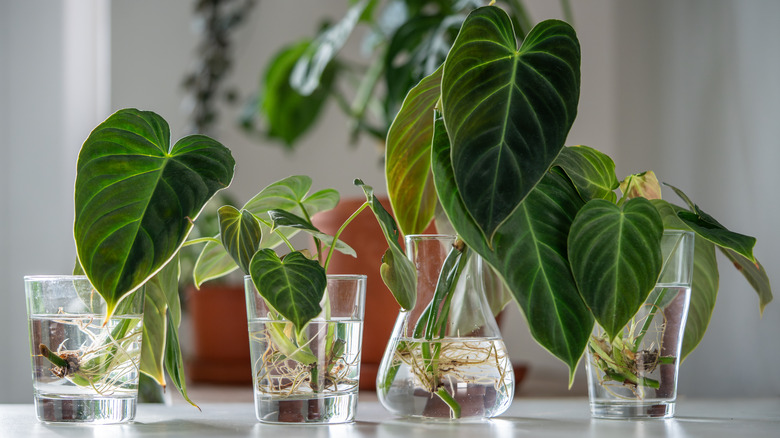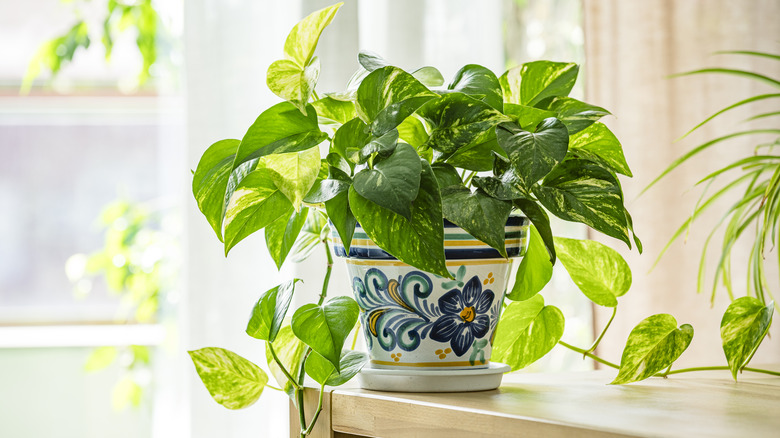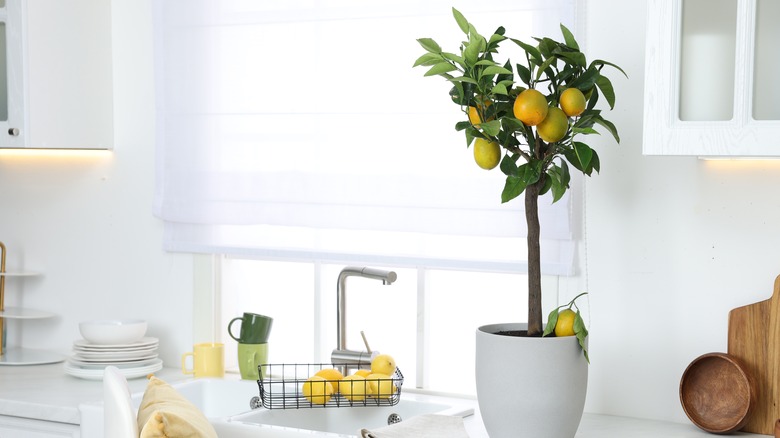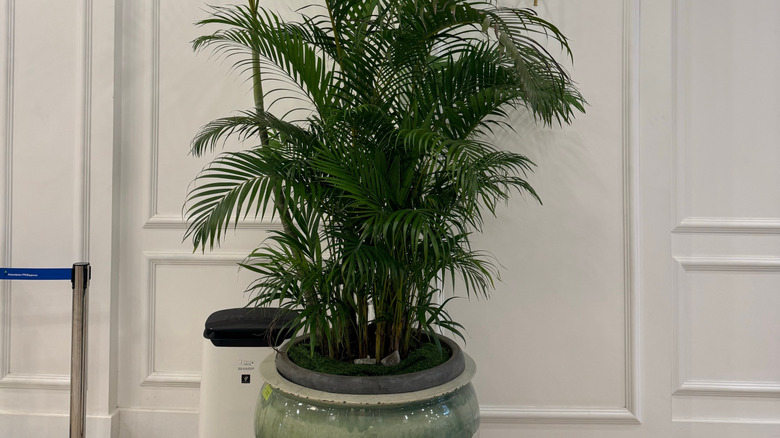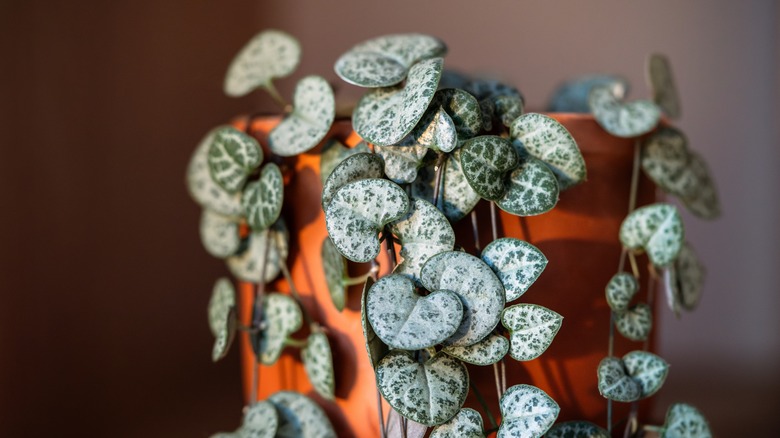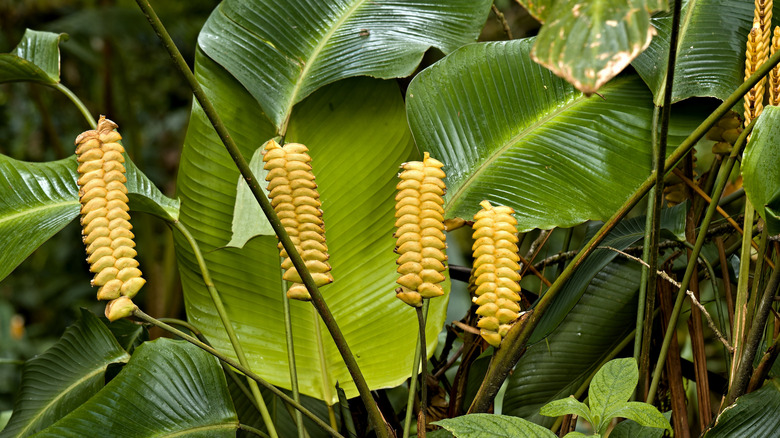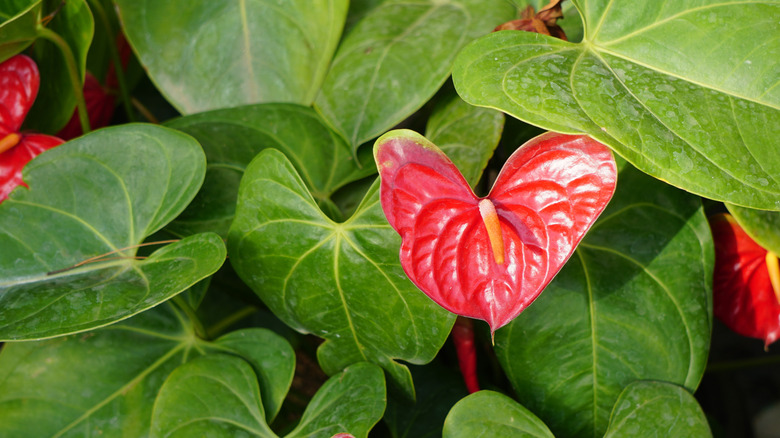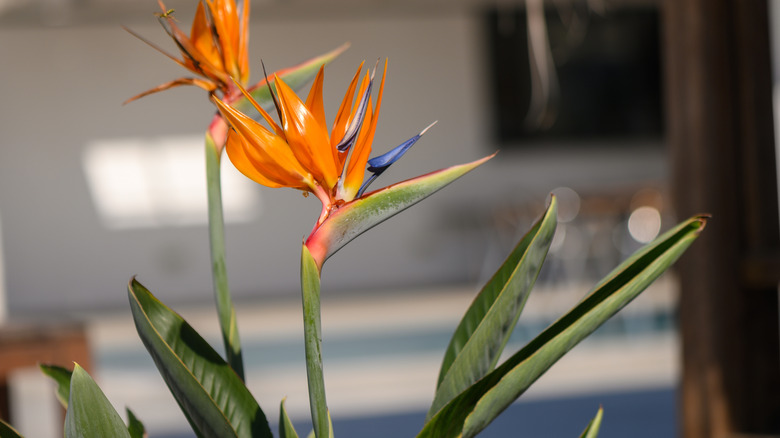20 Houseplants That Bring Luck & Good Fortune, According To Feng Shui
Feng shui is the ancient Chinese practice that's all about creating spaces that feel balanced and full of fresh energy, or chi, as it's traditionally called. According to feng shui, houseplants play an important role in balancing energies and can be placed in certain parts of the home to promote luck and good fortune.
The practice has been used in Asian countries for over 3,000 years, and over time, certain houseplants have become closely associated with prosperity, growth, and good fortune. From lucky bamboo to money trees and jade plants, many of the plants used in feng shui are well-known houseplants that people already grow.
Representing growth and bringing fresh new energy, houseplants are used in feng shui practices to balance the energies of the five elements: wood, wind, water, earth, and fire. Balanced energies promote an even flow of positive chi and help ward off negative energy, or sha. To determine the placement of houseplants, feng shui designers use a bagua map to chart spaces, assigning each area to a different theme in life. If you want to work with this method, we've uncovered 20 houseplants that you can use to promote luck and fortune in your home — along with more feng shui tips to consider when growing them.
Lucky Bamboo (Dracaena sanderiana)
In feng shui, the home is divided into nine sections, and as you enter, the money or wealth area is in the far-left corner. According to feng shui tradition, this is a good place to put a lucky bamboo (Dracaena sanderiana). Living plants symbolize the wood element in feng shui, representing growth and prosperity. The belief is that they will enhance abundance as they grow. Lucky bamboo is an easy-to-grow plant; just be sure to provide it with plenty of humidity, and if you're growing it in water, make sure the liquid doesn't stagnate.
Money Plant (Pilea peperomioides)
Since good fortune and luck are often associated with money, it's no wonder that many feng shui designers use the money plant (Pilea peperomioides) to enhance abundance. The coin-shaped leaves are a primary reason that Pilea peperomioides is linked to wealth. However, it's also a vigorous grower and reproducer, all traits that symbolize growth, vitality, and new opportunities. These are key qualities for attracting positive chi energy into your home.
Chinese Evergreens (Aglaonema spp.)
In most cases, feng shui principles for attracting money favor plants with rounded leaves over those with sharp edges, but in the case of Chinese evergreens (Aglaonema spp.), the abundance of lance-shaped leaves promotes good fortune, prosperity, and longevity. With medium to low light requirements, this plant can even be used to balance the water element in bathrooms and laundry rooms, which are especially important if they are in the wealth sector of the bagua map. Just don't place plants over a drain, because according to feng shui tradition, this symbolizes abundance "going down the drain."
Money Tree (Pachira aquatica)
Another important trait in houseplants for feng shui is upright growth, which symbolizes the life force, or chi. With its upright habit and large leaves, the money tree (Pachira aquatica) represents this principle and is often used in feng shui design. While this plant is native to regions of Central and South America, legend has it that a poor Taiwanese farmer found this unique plant, grew it, and sold it to make lots of money. The braided trunks are thought to be lucky, but don't expect the plant to flower because those same trunks also prevent the plant from blooming.
Peace Lily (Spathiphyllum spp.)
Peace lilies (Spathiphyllum spp.) have a lot to offer, including being low-maintenance houseplants for beginners that require very little sunlight. In feng shui, it's their ability to attract abundance, peace, and financial harmony that makes them important. According to feng shui, you should grow them in the abundance corner of your home or place them in the health sector in the middle of your house to promote a different kind of prosperity. Peace lilies are prolific growers, with some species getting as tall as six feet.
Jade Plant (Crassula ovata)
Like the money plant, the jade plant (Crassula ovata) is another classic example of a plant with coin-shaped leaves that represents luck and good fortune in feng shui practice. By mapping your home, you can place these in almost any room to bring more luck and wealth. According to some feng shui designers, the best place to activate its luck is by placing it near a door. There are a couple of places to avoid using jade plants, including the bedroom, where excess chi can disturb sleep, and the bathroom, where it can go down the drain.
Ginseng Ficus (Ficus microcarpa)
In feng shui theory, clutter is to be avoided, since it promotes stagnating energy, or sha, rather than encouraging chi, which is the vital life force that flows through all living things. All plants that encourage the flow of positive energy are used in feng shui design, particularly attractive, easy-to-grow plants like ginseng ficus (Ficus microcarpa). This is actually a tree grown as a houseplant, and in its native climate, it can get up to 40 feet tall, so it easily falls into the category of feng shui plants with upright growth to promote luck and good fortune.
Snake Plant (Sansevieria spp.)
Snake plants (Sansevieria spp.) defy the general "rule" in feng shui that you should choose plants with rounded leaves to promote good luck. In the right feng shui placement, the upright growth habit and sharp leaves of snake plants can represent swords cutting through negative energy and providing protection against destructive sha energy. While this is helpful when placed near the entry of the home, it may not be the best choice for places like the bedroom or relationship area of the bagua map.
Moth Orchids (Phalaenopsis spp.)
There are many feng shui symbols used to attract positive chi, including everything from dragons to bats and frogs. When it comes to luxury and abundance, almost nothing symbolizes these qualities better in feng shui than moth orchids (Phalaenopsis spp.). To use them to promote good luck and fortune, feng shui designers suggest using them wherever you need to promote calm and soothing energies, allowing the chi to flow smoothly. They can be used to feng shui your bedroom, helping to promote love and intimacy, or used in main living areas to promote a prosperous family.
Baby Rubberplant (Peperomia obtusifolia)
The baby rubber plant (Peperomia obtusifolia), with its thick, rounded leaves, is another symbol of abundance in feng shui. With its compact structure, it's used in feng shui to bring a boost of vibrant chi energy to small spaces. The baby rubber plant is easy to care for, and according to feng shui, it brings good luck into your home. The sturdy form of this plant suggests stability and solid growth for the future. There are several cultivars of this plant available, all of which can tolerate very low light conditions for long periods.
Basil (Ocimum basilicum)
Basil (Ocimum basilicum) has a rich history in a wide variety of cultures throughout time, from Ancient Egypt to Ancient Rome. In Greece, it was a symbol of love and protection, similar to how it is used today in feng shui to attract luck and good fortune. In feng shui, basil even has the power to dispel negative energies. When growing basil indoors, give it at least four to six hours of light daily. Since it's a perennial plant in warm climates, typically grown as an annual, you may need to refresh your basil plants regularly to keep that luck flowing.
Heartleaf Philodendron (Philodendron hederaceum)
One of the most well-known houseplants, heartleaf philodendron (Philodendron hederaceum), is also another lucky plant, according to feng shui. Using this ancient practice to promote good fortune, carefully place philodendrons in a space with plenty of light where they can add to the harmonious energies in your home. In feng shui, everything from the shape of the leaves to the placement of the plant and the material the pot is made out of matters, and with its lush climbing growth and heart-shaped leaves, this plant promotes the positive flow of energy.
Golden Pothos (Epipremnum aureum)
Like the heartleaf philodendron, golden pothos (Epipremnum aureum) is a houseplant whose climbing nature symbolizes continuous growth and good fortune in feng shui, probably due to the same climbing nature and heart-shaped leaves. Golden pothos are often given as gifts, and with benefits like being low-maintenance and tolerant of low-light conditions, they make a good plant for the home or office. In your house, keep them away from windows, placing them in the eastern corners of the bagua in areas representing wealth, health, and family.
Lemon Tree (Citrus x limon)
Growing a citrus tree indoors can be very rewarding, and according to feng shui, it's also going to improve your good fortune. Lemon trees (Citrus x limon) make good indoor houseplants, provided you choose the right variety and give them the proper growing conditions. Some people in cooler climates choose to grow lemon trees in containers outdoors for part of the year and bring them indoors during the winter. As a feng shui plant, the golden yellow fruits of lemon trees are clearly a symbol of luxury, and having one in a corner of your home is an auspicious sign.
Mandarin Orange Tree (Citrus reticulata)
Another citrus-tree-turned-houseplant is the mandarin orange tree (Citrus reticulata). During the Chinese New Year, mandarin oranges are given as gifts, symbolizing good fortune for the new year, and of course, feng shui draws on this same symbolism. One theory of why mandarin orange trees are linked to good luck is that the orange fruits symbolize gold and riches. Another theory suggests that they represent the positive energy of the sun. Either way, according to feng shui, they help bring chi into your home, which promotes your overall well-being.
Areca Palms (Chrysalidocarpus lutescens)
For big greenery and a plant that can help eliminate negative energy, areca palms (Chrysalidocarpus lutescens) are a feng shui favorite. Said to bring good health and prosperity, this large, leafy plant can be grown anywhere in your home that has direct sunlight. In the wild, these plants get up to 30 feet tall and half as wide, so you may need to repot this a few times over the years.
String of Hearts (Ceropegia woodii)
Although not as closely associated with good luck and fortune as many of the other plants on this list, string of hearts (Ceropegia woodii) is a feng shui plant that's said to represent progress and development with its trailing vines. The small heart-shaped leaves are delicate and whimsical, encouraging harmony and balance, according to feng shui. Often used in hanging baskets, this plant can be used in any bagua sector of the home where you want to see forward progress.
Peacock Plants (Calathea crotalifera)
With its striking appearance, the peacock plant (Calathea crotalifera) endows a home with the same good luck that its namesake, the peacock, traditionally symbolizes. The peacock represents beauty and good fortune, qualities that feng shui also attributes to the peacock plant. To promote development and renewal, the peacock plant can be used in any space large enough to contain it without letting its dominating growth overtake other elements in the design, which can cause imbalances that encourage negative chi and stagnation.
Anthurium (Anthurium andraeanum)
According to feng shui, another plant to include in the wealth sector of your home's bagua is anthurium (Anthurium andraeanum). With its shiny leaves and bright red flowers, this is an attractive plant, so it's no wonder that feng shui considers it lucky. The bold blooms are associated with passion, and with the increased chi moving around, there's less of a possibility of it stagnating and causing disruptions. Anthurium needs bright, indirect light and prefers warmth and humidity, so it requires a little more maintenance than many of the plants on this list.
Bird of Paradise (Strelitzia reginae)
With its large clumping form and upright leaves, bird of paradise (Strelitzia reginae) is another example of how feng shui recommends plants that move energy upwards to promote good fortune. But that's not why this plant is considered lucky in feng shui. Instead, it's the exotic bloom that gives this plant its lucky name. You can use the bird of paradise plant to promote luck in any area of your life, particularly in south-facing sectors of the bagua, which are related to fame and reputation.
